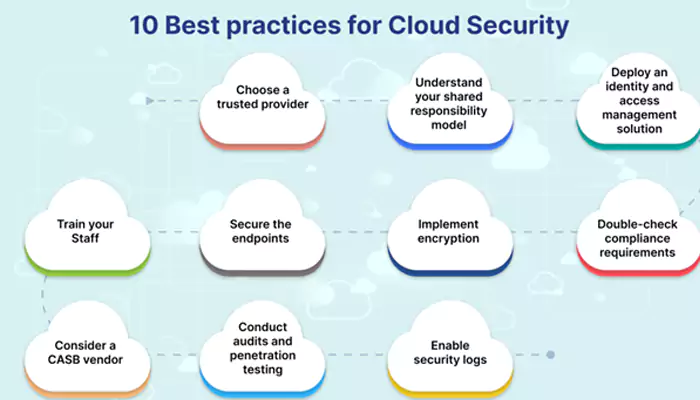World Cloud Security Day: Understanding the Basics on World Cloud Security Day
- Admin
- 1 year ago
- 4 minutes read

In honour of World Cloud Security Day, celebrated on April 3rd, let’s take some time out to understand the basics of data security.
With businesses and individuals relying more than ever on cloud services for storage, computing, and applications, understanding the basics of cloud security has become essential. Let’s get to know more about cloud security, its importance, the challenges it faces, and best practices for maintaining a secure cloud environment.
The Importance of Cloud Security
Cloud security is the collection of procedures, technologies, policies, and controls utilized to protect cloud-based systems, data, and infrastructure. The migration from on-premises data centres to cloud services has offered businesses scalability, flexibility, and cost-efficiency. However, this transition also presents unique security challenges and vulnerabilities. Protecting sensitive information from theft, leakage, and deletion is paramount, making cloud security a critical concern for organizations of all sizes.
Understanding the Shared Responsibility Model
A foundational concept in cloud security is the "shared responsibility model." This framework delineates the security obligations of the cloud service provider (CSP) and the client. Typically, the CSP is responsible for securing the infrastructure that supports the cloud services, including hardware, software, networking, and facilities. Conversely, the client is responsible for securing the data they place in the cloud. This can include managing access controls, encrypting data, and ensuring that applications are securely configured.
Challenges in Cloud Security
Data Breaches
Perhaps the most pressing concern is the risk of data breaches. When unauthorized parties gain access to sensitive data, it can lead to financial, reputational, and legal repercussions.
Misconfiguration
Cloud services are complex and feature-rich. Misconfiguring security settings is a common error that can expose data to the public or unauthorized users.
Insider Threats
Not all threats come from outside an organization. Employees or partners with access to the cloud can inadvertently or maliciously compromise data security.
Compliance
With regulations such as GDPR and HIPAA, businesses must ensure that their use of cloud services complies with relevant laws and standards.
Best Practices for Cloud Security

To mitigate risks and ensure a secure cloud environment, consider the following best practices:
Understand the Shared Responsibility Model
Fully comprehend your responsibilities under this model. Ensure that all security aspects under your control are robustly managed.
Use Strong Access Controls
Implement strict access controls using the principle of least privilege. Only grant access rights to users who need them to perform their jobs.
Encrypt Sensitive Data
Encrypt data both in transit and at rest. This ensures that even if data is accessed or intercepted, it remains unreadable without the decryption keys.
Regularly Review Configurations
Cloud environments are dynamic. Regularly review configurations and access rights to ensure they remain secure and appropriate.
Implement Multi-Factor Authentication (MFA)
This adds an additional layer of security by requiring users to provide two or more verification factors to gain access to cloud services.
Educate Your Team
Human error is a significant vulnerability. Provide regular training on security best practices and the latest threats.
Monitor and Respond to Threats
Utilize tools and services that provide real-time monitoring of your cloud environment for unusual activity. Have a response plan in place for potential security incidents.
World Cloud Security Day serves as a reminder of the paramount importance of securing our cloud environments. As we leverage the cloud for its numerous benefits, we must also be vigilant in protecting the data and services it hosts. By understanding the basics of cloud security, acknowledging the challenges, and implementing best practices, we can create a safer digital world for everyone. Embracing the shared responsibility model, staying abreast of technological advancements, and fostering a culture of security within organizations are critical steps toward achieving robust cloud security. Let’s use World Cloud Security Day not only to reflect on our current security posture but also to commit to ongoing education and improvement in our cloud security efforts.












